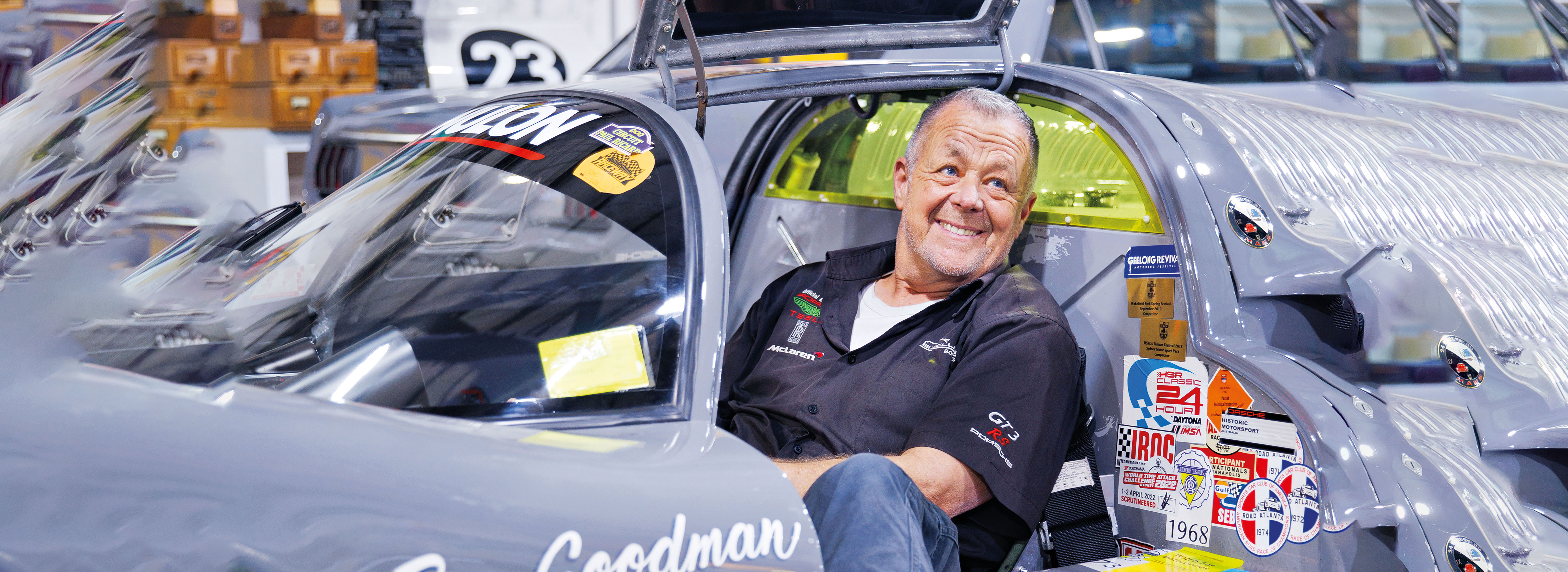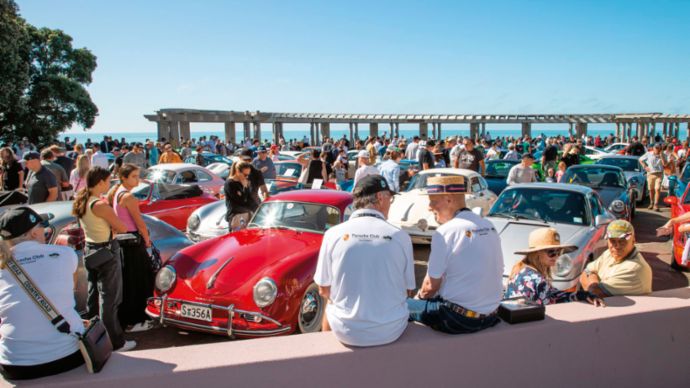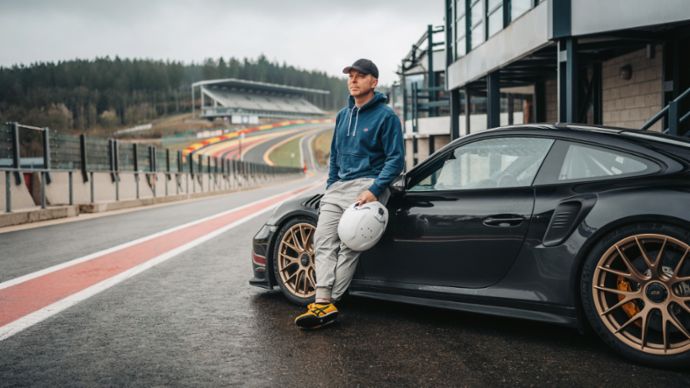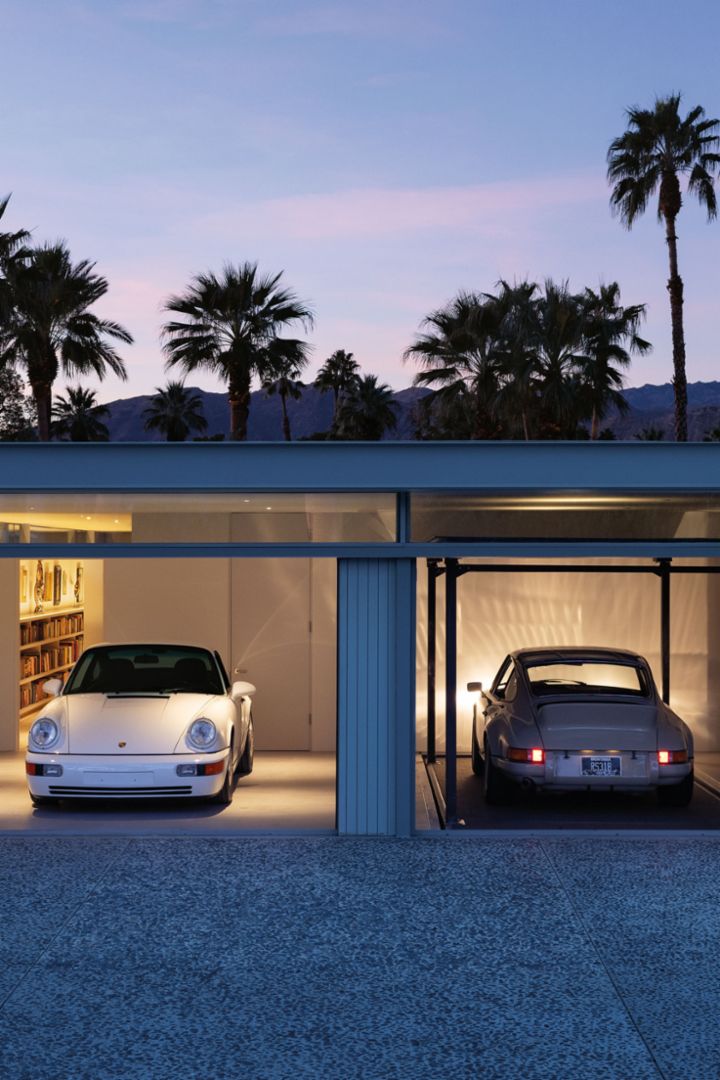Black and white
Porsche Australia & New Zealand – Creating Porsche perfection takes precision, persistence and passion.
There is nothing grey about Ron Goodman. His black-and-white nature exposes itself when you walk through his immaculate Sydney workshop, which resembles a Beverley Hills medical clinic filled with exotic cars, not Hollywood stars. And like many idols seeking to look their best, they are all here for the same reason: to receive his surgical touch. “I’ve always been like that,” he says, discussing his lifelong dedication to details and precision. “As a kid it could take me hours just to fit reflectors to the mudflap of my bicycle. If it wasn’t right I would buy another mudflap and redo it.”
His need for exactness was elevated when two wheels turned to four. It reached a new height when the neighbour across the street brought home a new car. “It was a narrow-body 911 in Guards Red. I was young but I still remember it vividly. After one ride I was hooked.”
It is no surprise that he chose the same model as his first Porsche. The real surprise was how he secured it. “I drove my Holden utility into this dealership and thought, ‘I can’t afford a Porsche.’ But the guy said, ‘we’ll take your ute as a trade-in swap.’ I took the 911 back to the workshop where it went from a narrow body to a wide body.”

Team colours:
Yellow-tinted windows and pinstriping give Ron Goodman’s Porsche collection a retro-aeronautical style.Ron’s attention to detail propelled his first 911 to a concours win and various magazine covers. It kick-started his Outlaw-themed Porsche collection, which today includes some remarkable Goodman-tailored classics. “You can still see the Porsche DNA in the cars we build but their detailed changes make people go ‘Wow!’”
Famous US car customiser Dave Kindig and LA-based 356 specialist Rod Emory are among them. “I relate most to my 1954 356 because we’ve been through so much with it,” Goodman says. “I built it myself. It started as a rust bucket. I planned to make it a racing car but I took it to the USA for Monterey Car Week, where it won at Carmel-by-the-Sea, one of the programme’s many show events. It’s gone on to win every accolade in the US.”
Visually stunning and race-winning fast, its precision rivals a tourbillon watch movement. “I built that car with weight scales underneath each wheel. I would test fit a body panel on the car, take it off, file the panel down to get within a gram, and then refit it. It was the only way to make sure the car was perfectly weighted.”
Then there is his “Aero 356”, powered by an Australian-developed 2.0-litre three-cylinder radial motor, an engine layout usually found in aircraft. Ron added nitrous oxide injection for extra velocity. He also added yellow Perspex tappet covers so you can see the valve train operating. And he didn’t stop there.
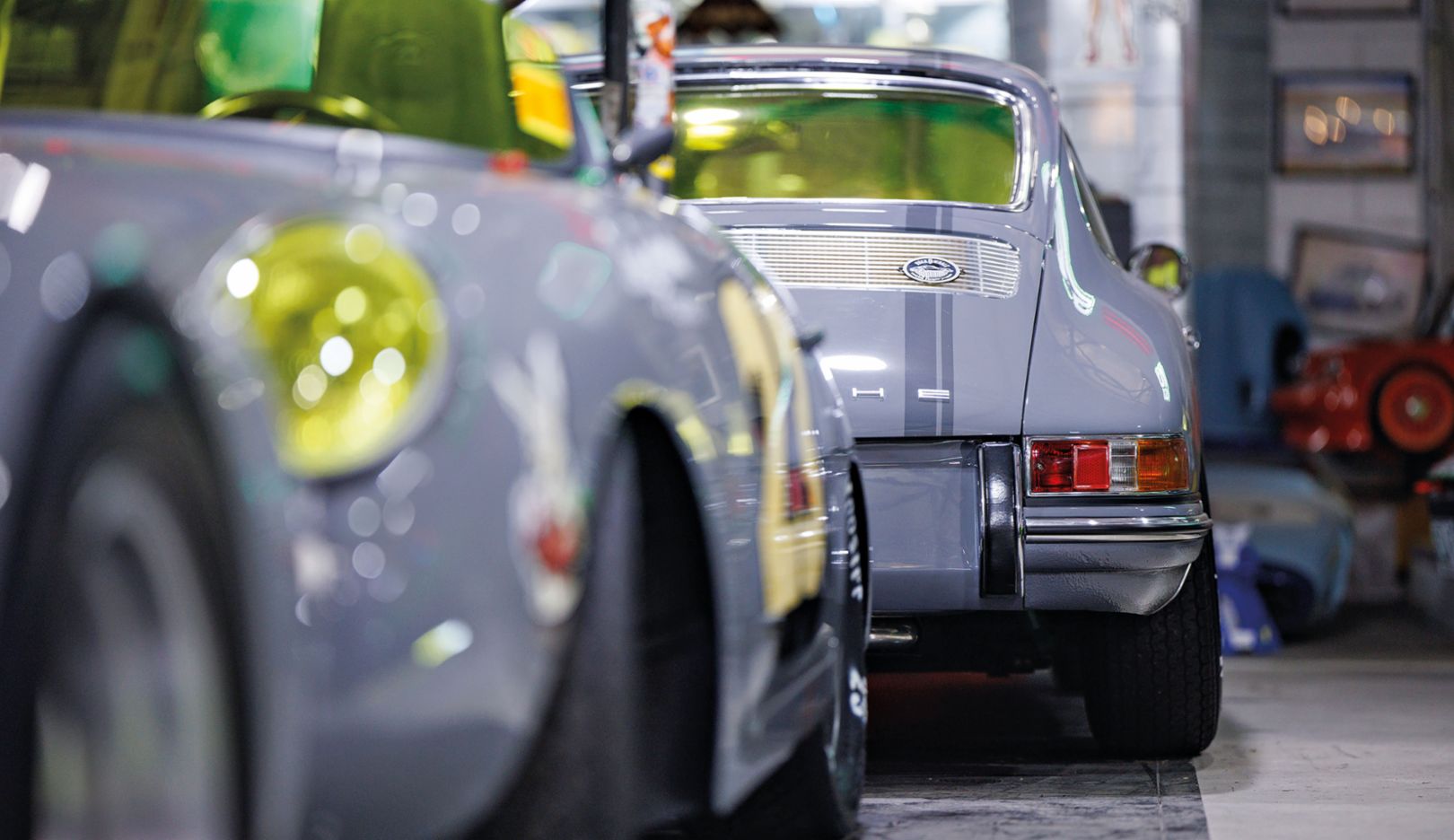
Personal favourites:
Many Porsche 356 and 911 sports cars have received Ron Goodman’s unmistakeable customising touches.“When the bodywork was ready for paint I thought, ‘The guard lines are too high. We need to drop the wheel arches by 20 millimetres. Start again.’” So he did. “Every single detail has been handmade or redesigned by me. The floor is handmade from aluminium and matches the factory original perfectly. We handmade the centre tunnel and then chromed it. Every single nut and bolt is either titanium, Inconel or aluminium. Even the exhaust system is 3D-printed Inconel – the same material used in Formula One.” Ron believes Porsche sportscars are made to be driven and raced. But even he needs to navigate his perfectionism. “The Aero 356 is driven to its full potential but I wanted a show-winning paint finish for the undercarriage. I lined the wheel arches and underside in three-millimetre-thick neoprene, the material used in surfing wetsuits. It’s matt black and looks beautiful – and you don’t get stone chips.”
His 1953 356 Cabriolet claimed the Concours D’Elegance Trophy at the 2013 Porsche Rennsport Australia Festival. He says, “The previous owner did a stunning job on its restoration,” but Ron invested a further 500 hours to get the details right. Such precision separates Ron Goodman from other car builders, restorers and racers. But one special detail stretches that gap. It’s here the Goodman Porsche story turns grey, a shade so unique it has its own designation and code. “Goodman Grey is the name of this paint colour,” he says, referring to his cars’ glass-like finish. The glaze is so deep you could submerge your hand into it. “Automotive refinish brand Glasurit assigned it the colour code 356‑23,” a reference to his classic 1950s Porsche cars and their racing numbers. “Back in the 1990s, I was originally going to paint my ’54 356 racer a pearl red but when I saw it in grey-coloured ground coat, I thought, ‘That looks awesome.’ ”
His discovery predated the recent flat‑grey supercar craze by more than a decade. To this day, automotive fans the world over – including Ron – continue to choose Goodman Grey for their special car. “My new 911 GT3 RS arrives mid-year. The Porsche Sonderwunsh special request programme is painting it Goodman Grey. It even has its own Porsche paint code: 711 711. To see my colour with my name on it is very humbling. Seeing other people choose it is something special.”
